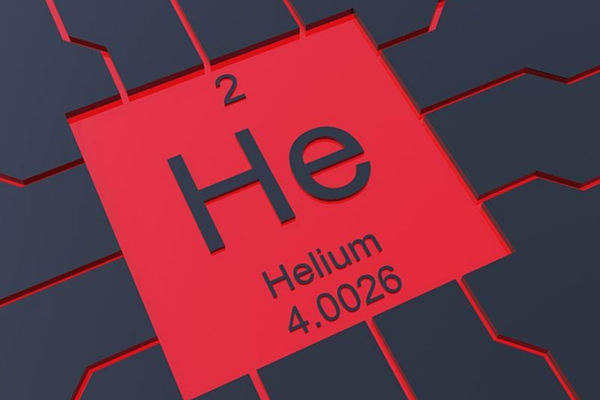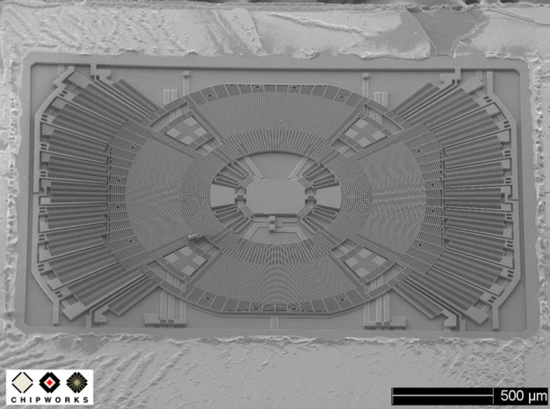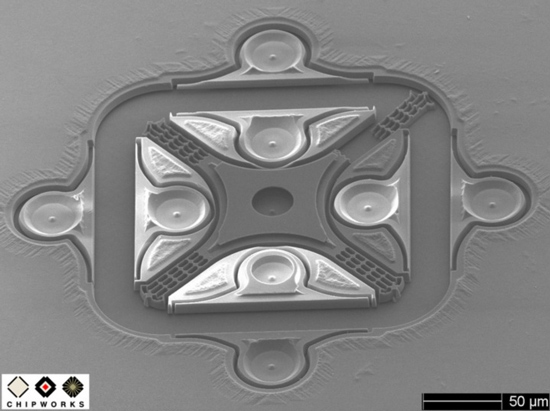iPhone allergic to helium gas turns into a brick machine, Android?
Many of us have witnessed problems when using mobile devices but strangely like the case of Erik Wooldridge, a System Expert at Morris Hospital, Chicago, but certainly not. when.
Specifically, during the installation of a new GE Healthcare MRI, a lot of people 's cell phones in the hospital, all Apple products stopped working, some Apple Watch watches also flickering activity. Meanwhile, Android phones do not encounter the same problem. This situation affects 40 different devices, in a fairly wide range.
Erik said: 'The first thing I think about is some kind of EMP (electromagnetic pulse) emitted by the MRI machine that caused this. And if it is true, we may have a lot of trouble. "
Erik added, most of the affected Apple devices are completely dead, there are devices that cannot be charged. For devices that are upstream, there is a problem with mobile waves even though the wifi connection is still stable and fast.
After Erik posted the situation on social networking site Reddit, some system administrators said the cause of the phenomenon could be the liquid helium used to cool the MRI machine. Erik investigated and discovered it was true that at the time of the incident there was a helium leak that spread throughout the building.

Magnetic resonance imaging in hospitals.
After that incident, the devices began to recover slowly but not completely. Several days later, an iPhone of which suffered a serious error, the touch of some Apple Watch does not work even though the screen is still bright.
Erik has grouped the affected devices and found that Apple devices are faulty iPhone 6 and above and Apple Watch Series 0 and above. Among Apple mobile devices in the building there is only one iPhone 5 and it is not affected at all. So what happened that affected Apple mobile devices and Android devices?
First of all, we learn a little bit about the type of microelectromechanical system components (MEMS) - the smallest mechanical apparatus in the world. Each phone is equipped with an accelerometer and a gyroscope with only microns thin. According to the hypothesis given by Reddit members, helium molecules are small enough to slip into vacuum-sealed chips and interfere with the behavior of these mechanical parts.

But if that is the case, why is Android phone not affected by all phones using MEMS gyroscope? Perhaps, iOS exists a vulnerability that causes the device to hang up when receiving error data from the gyroscope? But Apple Watch running WatchOS is also affected and iPhone before version 6 is not affected. If not a software error, where is the problem?

Photo taken inside a MEMS gyroscope.
The heart of every electronic device is a clock (quartz oscillator, which produces a predictable frequency - usually 32 kHz). Without the clock, the CPU does not work, the system will stand still.
But these quartz oscillators are quite large in size - 1x3 mm or more and do not work properly at high or low temperatures. Apple has started using MEMS time oscillators named SiT512, manufactured by SiTime to replace quartz components to create smaller and smaller hardware.
SiT512 is the smallest and least energy-efficient 32kHz oscillator in the world. And it is very likely that this device is affected by helium intrusion and causes problems.

An MEMS oscillator under an electron microscope perspective.
A faulty oscillator will cause the mobile device to malfunction like Erik's description. Erik recreated the incident in a laboratory with the iPhone 8 Plus. The iPhone is in bright screen mode and the timer is placed in a sealed bag filled with helium. This experiment seems unrealistic because when the helium exposure occurs, the devices are much lower. After about 8 minutes and 20 seconds, besides the clock stopped, nothing crazy happened, the screen is still lit.
In another similar experiment, the iPhone 8 turned off after only about 4 minutes.
In the user guide for iPhone and Apple Watch products, Apple mentioned that the iPhone could be damaged or affected by exposure to chemical environments such as vaporized liquid gases such as helium. The company also gave specific instructions on disconnecting the charger and letting the air evaporate for a week. After that time, when the air has flown out of the device and the battery is completely empty, charge the device for about 1 hour and then turn it on again.
Other MEMS devices can also be affected by large amounts of small molecular gas. SiTime knows this and is looking for ways to minimize the problem.
In short, getting helium molecules into the device, causing the clock to stop and turning the phone into a brick in a short time is an extremely rare problem. You don't have to worry about this.
See more:
- How does the security chip on smartphones work?
- Decoding 8 icons often appears on the iPhone screen but not everyone knows
- iPhone has a crash or a sudden crash after updating to iOS 12
You should read it
- Do you believe that just one click can disable iOS 11 and turn iPhone 8 into a brick
- Tips to fix iPhone 5 error turn off and don't restart
- Quick fix of Bluetooth error does not work on iPhone 7 and iPhone 7 Plus
- Instructions on how to fix 53 error when restoring on iPhone
- How to fix iPhone error on the screen?
- Instructions on how to turn off and turn on the power of iPhone X
- How to use iPhone Xs, Xs Max for newbies
- Warning: A website appears to help bad guys lock iCloud remotely and turn your iPhone into a brick
May be interested
- Strange white dwarf discovered, split by hydrogen and helium gas
 due to its strange appearance, this white dwarf has been nicknamed janus, after the roman god with two faces.
due to its strange appearance, this white dwarf has been nicknamed janus, after the roman god with two faces. - The best alternatives to 'brick' TVs
 with a little effort and savvy, you can still pick up a display that forgoes all the smart tv functionality but still looks great.
with a little effort and savvy, you can still pick up a display that forgoes all the smart tv functionality but still looks great. - Is it true that Android costs more RAM than iOS?
 one of the most controversial questions between the two most popular mobile operating systems in the world, android and ios. when looking at the configuration of iphone phone models and android flagship models, you can easily realize that iphone is often equipped with less ram than iphone ...
one of the most controversial questions between the two most popular mobile operating systems in the world, android and ios. when looking at the configuration of iphone phone models and android flagship models, you can easily realize that iphone is often equipped with less ram than iphone ... - AI turns a series of famous 'meme' photos into videos
 dream machine has turned a series of the most popular still memes into videos.
dream machine has turned a series of the most popular still memes into videos. - How the iPhone 16 turns everyday objects into stunning macro art
 you don't need to spend a fortune on an iphone 16 pro or iphone 16 pro max to take macro shots. the iphone 16's standard 12mp ultra-wide lens lets you get close enough to capture great detail.
you don't need to spend a fortune on an iphone 16 pro or iphone 16 pro max to take macro shots. the iphone 16's standard 12mp ultra-wide lens lets you get close enough to capture great detail. - 9 things you can only do on Android phones
 after all these updates, it turns out there are still some things that are exclusive to android phones. here is a list of the best features that the iphone lacks.
after all these updates, it turns out there are still some things that are exclusive to android phones. here is a list of the best features that the iphone lacks. - How to view the Emoji emoticons of iPhone on Android
 if you use an android phone and want to make sure the message you send to a friend using iphone will display as expected, you should use the iphone emoji. to use the iphone emoji on android does not need to root the phone, this is a detailed guide for you.
if you use an android phone and want to make sure the message you send to a friend using iphone will display as expected, you should use the iphone emoji. to use the iphone emoji on android does not need to root the phone, this is a detailed guide for you. - Turn your Nokia 'brick' phone into a mini computer running Linux
 reimu notmoe, a chip design engineer at sudomaker, created a computer board called notkia that turns a nokia 1680 into a linux-powered computer, equipped with a 5 mp camera, wi-fi, and a usb-c port.
reimu notmoe, a chip design engineer at sudomaker, created a computer board called notkia that turns a nokia 1680 into a linux-powered computer, equipped with a 5 mp camera, wi-fi, and a usb-c port. - How to enable iPhone search even though the device is powered off?
 now, even if the iphone thief turns off the power, you can still locate your iphone. as you know, previously iphone users could not locate the device if the device was powered off or in a state of low battery.
now, even if the iphone thief turns off the power, you can still locate your iphone. as you know, previously iphone users could not locate the device if the device was powered off or in a state of low battery. - Honestly, if you get bitten by this bug, you will be forced to become a vegetarian
 when bitten by this bug, you will be forced to become a vegetarian by being allergic to meat. the strange creature that seems to be only in these fantasy movies is absolutely real and many people are terrified.
when bitten by this bug, you will be forced to become a vegetarian by being allergic to meat. the strange creature that seems to be only in these fantasy movies is absolutely real and many people are terrified.









 Google has allowed developers to force users to update Android apps
Google has allowed developers to force users to update Android apps Google Maps allows users to warn that a road is 'speeding'
Google Maps allows users to warn that a road is 'speeding' Facebook, Instagram and YouTube have just been kicked out of this App Store throne in the US by this app
Facebook, Instagram and YouTube have just been kicked out of this App Store throne in the US by this app Samsung introduced 4 new infinity display technologies, no 'rabbit ears'
Samsung introduced 4 new infinity display technologies, no 'rabbit ears' Turning his back and covering his face still didn't escape the technology of identifying Chinese gait with an accurate rate of 94%.
Turning his back and covering his face still didn't escape the technology of identifying Chinese gait with an accurate rate of 94%. 6 types of unreliable applications on Google Play, should not be installed on smartphones
6 types of unreliable applications on Google Play, should not be installed on smartphones